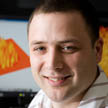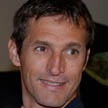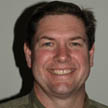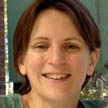I’m a Scientist is like school science lessons meet the X Factor! School students choose which scientist gets a prize of $1000 to communicate their work.
Scientists and students talk on this website. They both break down barriers, have fun and learn. But only the students get to vote.
This zone is the Boron Zone. It has a range of scientists studying all different topics. Who gets the prize? YOU decide!









Simon will go to town on this one I’m sure – not an area of strength for a zoologist.
0
Funnily enough, I learnt quite a lot about this recently because I bought a telescope for my 5 year old son! I asked all the astronomers at my university about what I should get. None of them had a clue – they weren’t interested in looking at the stars or solar system themselves!
There are quite a few designs. I bought a reasonable cheap “Newtonian refractor” – what you think a telescope looks like from the movies, made of a long tube and lenses. You can also get a “Dobsian reflector” which uses mirrors instead – they are fatter and shorter. I am sure Simon can tell you more
0
That’s a great question! The short answer is yes! I’ll give a full answer in two parts: what you can buy in shops and what professional astronomers use.
What you can buy in shops
There are two main types of telescope you can buy: refractors – telescopes with lenses, and reflectors – telescopes with mirrors. A refractor is a long tube that holds a couple of lenses (at least), while a reflector is typically shorter with at least two mirrors, and sometimes three.
The number of mirrors in a reflecting telescope depends on where the eyepiece is: a telescope with two mirrors is usually a Dobsonian reflector, and the eyepiece is near the top; a telescope with three mirrors is called a Schmidt-Cassegrain reflector and the eyepiece is at the bottom.
These telescopes can be reasonably priced ($100) up to very expensive ($20,000) depending on how big the mirror is and whether there is a computer that will move the telescope as the Earth rotates.
Professional telescopes
We use different kinds of telescopes depending on what we’re looking at. If we want to look at light we can see with our eyes (optical light) or light in the infrared, then we use a Schmidt-Cassegrain reflector as above, although usually a lot bigger than you can buy in shops. If we want to look at radio waves, we use a radio dish like the one at Parkes in central NSW; it uses the same basic idea of reflection, but doesn’t need mirrors, just smooth curved panels. To see other kinds of light (e.g. ultraviolet, microwaves, X-rays) we use variations of these two ideas.
0
We use night vision scopes for marine turtle surveys – they are great for not so good for star gazing
0